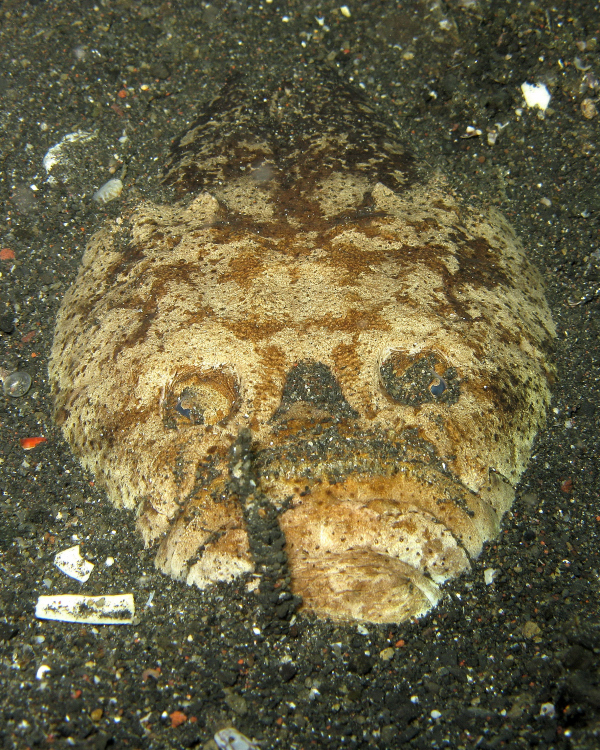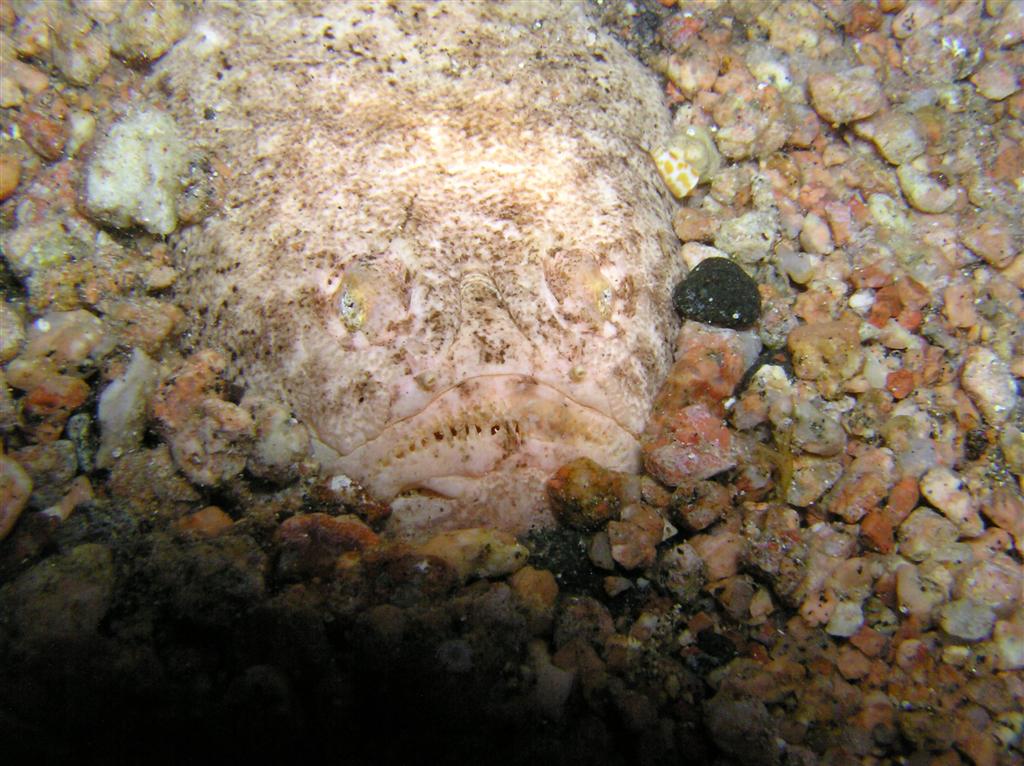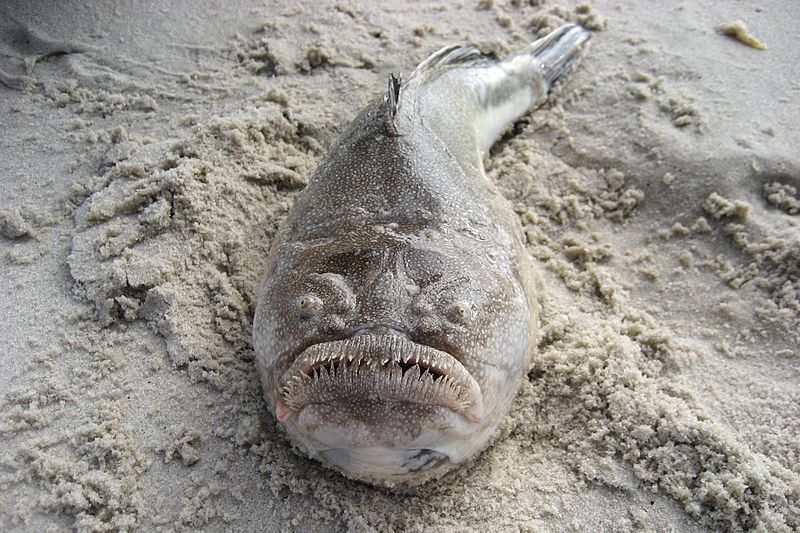I wouldn't be happy either if I had to live in dirt
Image taken by altsaint via Flickr
This fish doesn't mess around. The Stargazer is an ambush predator with a face only a mother could love. Luckily it hunts with its face mostly covered under sand waiting for prey to swim by. It keeps its two bulging eyes out always looking for its next victim. When a nearby fish is spotted it dashes from the sand with a snake like speed and swallows its victim whole. The Stargazer's disturbing face and merciless hunting tactics make it another great candidate for our Halloween Special. Here are some videos. More info below...but beware of watching eyes.
Diver's feed a Stargazer
Some weird Stargazer ritual going on here
A lot of cool footage of the Stargazer hunting

Image taken by Stephen Childs via Flickr

Image taken by prilfish via Flickr

Image taken by Canvasman21 via Wikipedia
Scientific Name: Astroscopus guttatus
Phylum: Chordata
Class: Actinopterygii
Order: Perciformes
Family: Uranoscopidae
Genus: Astroscopus
Key Characteristics:
- As you may have already guessed, the Stargazer fish gets its name because of its stationary face and eye position looking up towards the ocean's surface.
- There are about 50 different species of stargazer
- The average fish size varies from 18-25 cm (7-10 in.) but some giant species can reach as long as 90 cm (35 in.)
- They use their side fins as shovels to bury quickly into the ocean's floor.
- Stargazers also have poisonous spines behind their gill covers
- A small worm like appendage hangs from the the bottom of the stargazer's jaw. When needed they will use this appendage as a lure to attract prey.
- Stargazers lay their eggs during the spring and summer at the bottom of the sea floor. The eggs are transparent and hard to spot and will float to the ocean's surface and hatch. They survive by eating the egg's yoke sac and when they reach from 12 to 15 millimeters they are able to swim to the bottom of the ocean's floor and mature.
Diet:
- Small fish, crabs, squid, and anything small enough to eat
Habitat/Geography:
- Bottom of ocean floor in mud or sand
- Mediterranean sea and Atlantic Ocean
Fun Fact:
- The Stargazer has an electrical organ located on its head behind its eyes which allows it to give off a small electrical pulse to confuse and stun its predators.
Sources:

Imaga taken by LifeSupercharger via Flickr

No comments:
Post a Comment